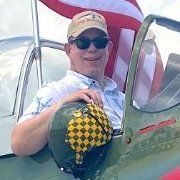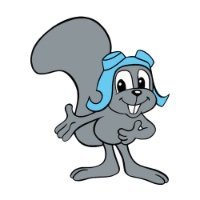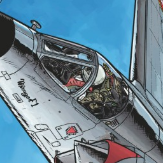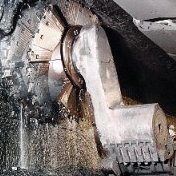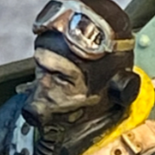-
Posts
74 -
Joined
-
Last visited
About David E Brown
- Birthday 01/14/1956
Contact Methods
-
Website URL
http://www.stormbirds.com/experten
Profile Information
-
Gender
Male
-
Location
Bedford, Nova Scotia, Canada
-
Interests
Late-war German aircraft camouflage and markings.
Me 262, Fw 190-series, Ju 88-series, Hs 129.
Late-war german armour, U-boats.
Profession: Retired Petroleum Geologist
Recent Profile Visitors
2,225 profile views
-
 Juggernut reacted to a post in a topic:
Laminar Flow Design - New Fw190D-11/D-13 Conversion?
Juggernut reacted to a post in a topic:
Laminar Flow Design - New Fw190D-11/D-13 Conversion?
-
 CRAZY IVAN5 reacted to a post in a topic:
Laminar Flow Design - New Fw190D-11/D-13 Conversion?
CRAZY IVAN5 reacted to a post in a topic:
Laminar Flow Design - New Fw190D-11/D-13 Conversion?
-
 Paul2660 reacted to a post in a topic:
Laminar Flow Design - New Fw190D-11/D-13 Conversion?
Paul2660 reacted to a post in a topic:
Laminar Flow Design - New Fw190D-11/D-13 Conversion?
-
 D Bellis reacted to a post in a topic:
Laminar Flow Design - New Fw190D-11/D-13 Conversion?
D Bellis reacted to a post in a topic:
Laminar Flow Design - New Fw190D-11/D-13 Conversion?
-
 Darren Howie reacted to a post in a topic:
Laminar Flow Design - New Fw190D-11/D-13 Conversion?
Darren Howie reacted to a post in a topic:
Laminar Flow Design - New Fw190D-11/D-13 Conversion?
-
 Martinnfb reacted to a post in a topic:
Laminar Flow Design - New Fw190D-11/D-13 Conversion?
Martinnfb reacted to a post in a topic:
Laminar Flow Design - New Fw190D-11/D-13 Conversion?
-
David E Brown started following Laminar Flow Design - New Fw190D-11/D-13 Conversion?
-

Laminar Flow Design - New Fw190D-11/D-13 Conversion?
David E Brown replied to Thunnus's topic in LSP Discussion
Gents, Focke-Wulf Fw 190 D-11 aircraft lacking the apertures for the outer wing MG 151/20 (as observed in photographs) are indicative of machines designated at the time of production to be fitted with the R4M launch rails (26 rockets, 13 per wing) and non-fitting of the outboard MK 108/30s. Based on published and internet-derived photos, documents, and various publications and discussion board threads, eight (8) D-11 machines are known: WNr.220006 – ‘White <53’, VFS-G.d.J., found at Bad Wörishofen WNr.220009 – ‘White <<’, VFS-G.d.J., found at Bad Wörishofen WNr.220010 – ‘White <58’, VFS-G.d.J., later ‘Red 4’ of JV 44, found at München-Riem WNr.220011 – ‘White <57’, VFS-G.d.J., found at Schongau WNr.220012 – ‘White <<–’, VFS-G.d.J., ex-2./JG 101, found at Salzburg-Maxglan WNr.220013 – ‘White <??’, VFS-G.d.J., later ‘Red 2’ of JV 44, Bad Aibling WNr.220014 – ‘White <61’, VFS-G.d.J., Bad Wörishofen WNr.220017 – ‘White <??’ VFS-G.d.J., ex-2./JG 110, found at Weimar (document only) The flight book of Uffz. Hartweig of 2./JG 110 indicated he transferred two Fw 190 D-11s to VFS-G.d.J. sometime in February 1945. As Tomas Poruba et al. note (JaPo, “Focke-Wulf Fw 190 D Camouflage and Markings – Part II”, p.436) it is uncertain if the two machines (WNrn.220010 and 220017) were “employed at this fighter school or simply being transferred to the VFS”. As well, Tomas also notes that Fw 190 Ds were being ferried to and from Altenburg so could have been associated with JG 110. Note that Werknummer 220010 is ‘White Chevron 58’ of VFS-G.d.J. and later ‘Red 4’ with JV 44. Documents confirm that an entire Staffel (2.) of JGr. 10 at Parchim was equipped Fw 190 Ds fitted with the R4M for operational testing. Indeed, there is the unknown machine - possibly WNr.210069 - that was found and extensively photographed and also with a cine film at Schongau covered in snow. Other machines are similarly documented to have been with II./JG 26 and JGr. 300. Several months after the release of our Experten No. 3 book in 1995, Dave Wadman and I received the following Luftwaffe document, dated March 22, 1945, which sheds more light on the use of the R4M weapon: "SSO LSCW 694 22/3 (1510) SSD LW Fuerungsstab IA Geheim! GLTD SSD LW Fuerungsstab IA SSD NACHR. LW. ORG. STAB 2. ABT. 1.) Einsatz Erprobungsstaffeln Fw 190 D-9 mit --R4M-- und mit --21 cm Werfer-- wird wie folgt vorgeschlasen: A) Abgabe der fluzeuge an diejenigen geschwader, denen die Staffel z.zt. Einsatzmaeszig unterstellt sind. B) Flugzeugfuehrer and technische personal treten zur Jagdgruppe 10 zurueck. Einsatz der flugzeuge durch Flugzeugfuehrer der jeweiligen Geschwader. 2.) Staffel Fw 190 A-8 bezw. A-9 mit --Jaegerfaust-- voraussichtlich am Marz 27 einssatzbereit. Einsatz bei JG 301 unter ausgabe der flugzeuge nach einweisung des technische personal wie unter ziffer 1. 3.) Es wird Gebeten, von aufloesung Jagdgruppe 10 z. zt." --------------------------------------------------------------------------------------------------------------------- "SSO LSCW 694 22/3 (1510) SSD LW Fuerungsstab IA SECRET! GLTD SSD LW Fuerungsstab IA SSD NACHR. LW. ORG. STAB 2. ABT. 1.) Proposal for the utilization of the operational test units (Erprobungsstaffeln) equipped with Fw 190 D-9's with R4M and 21 cm launchers A) The aircraft are to be transferred to the Geschwader under which the Staffel(n?) are currently under operationally control. B) The pilots and technical personnel are to return to Jagdgruppe 10. The aircraft will be operated by the pilots of the Geschwader that currently holds the operational command of them. 2.) The Staffel equipped with Fw 190 A-8 and A-9 with Jägerfaust are to be ready for action under the operational control of JG 301 from March 27. The technical personnel are to return to Jagdgruppe 10 as noted under Number 1. 3.) A request is made for the immediate disbandment of Jagdgruppe 10. (Document Incomplete??) This is an important document in that it reveals the various D-9 aircraft (and D-11s?) originally attached to JGr.10 were transferred to operational units for combat evaluation / operations were now to be retained by them permanently. While no units are specifically mentioned, the information available reveals that many ended up with I./JG 301, II./JG 26 and JGr. 300 from at least late March 1945 onwards. Furthermore, JG 301 was charged with using a Fw 190 A-8/-9-equipped Staffel mounting the R4HI Jägerfaust. Which Staffel remains known. Dave discovered more information related to this weapon system, sourced from the War Diary of the Chief: Technical Air Armaments, Flight Test Working Group for the period 26 February to 4 March 1945, this time discussing its use with the Ta 152: Equipping the Ta 152 with Special Weapons In the last weeks of February 1945 an entire Staffel of Fw 190 D-9s belonging to the test unit Jagdgruppe 10 at Parchim was equipped with R4M air-to-air rockets. Each Fw 190 D-9 was equipped with two underwing launch racks, each with twelve rails, carrying a total of twenty-four R4M. JGr. 10 had been specially assigned to test the R4M. The R4M was the only air-to-air rocket to see service with the Luftwaffe and its warhead contained a high-explosive charge weighing 540 grams (R=Rakete, 4.4 kg=weight, M=Minenkopf). As a result of these trials the order was issued to immediately equip not just the Me 262 but also the Fw 190 and Ta 152 with the R4M. The R4M installation was to be installed on the Ta 152 C-1/R31 and the Ta 152 H-1/R31. Modification directives also anticipated retrofitting the Ta 152 H-1/R11, H-1/R21 and C-1/R11. By the end of the war JGr. 10 was to have three Ta 152s in addition to the rocket-armed Fw 190s. The effectiveness of the R4M was successfully demonstrated by the Me 262. The order that disbanded Jagdgruppe 10 on 2 April 1945 called for all of 2/JGr. 10’s Fw 190 D-9s equipped with the R4M to be handed over to I/JG 301; it is not known whether this order was carried out. So where is all this going? A key observation in the photos of these machines is that several of them lack the outer wing apertures for the MG 151/20 or MK 108/30 (i.e. the Fw 190 F-8/-9, D-9 wing). In particular, a photo of the D-11 ‘White <57’ / WNr.220011 taken soon after its capture reveals launching rails for R4M rockets under the port wing. Later photos taken of its wings show the missing outer wing gun apertures. I believe this is unequivocal evidence that D-11s lacking these apertures indicate they were fitted at the factory with the R4M launching system. It appears obvious that due to weight restrictions (that would affect performance) the mounting of one of these weapons would not permit fitting the MK 108/30s. Both JV 44 D-11 aircraft – ‘Red 2’ / WNr.220013 and ‘Red 4’ / WNr.220010 – noticeably lack this feature. The wing leading edge shows no evidence that an aperture existed and later covered over with a metal panel. Thus, their wings were the ones originally manufactured at the factory and by inference were most probably fitted with the R4M launching system at the time of their manufacture. And hopefully this component with also be included in the D-11 conversion kit we are discussing! Best, David -
 nmayhew reacted to a post in a topic:
Hasegawa Fw 190D-9 "Blue 12" WNr. 500570
nmayhew reacted to a post in a topic:
Hasegawa Fw 190D-9 "Blue 12" WNr. 500570
-
 Uncarina reacted to a post in a topic:
1/32 Trumpeter Me 262A-1a "Yellow 3"
Uncarina reacted to a post in a topic:
1/32 Trumpeter Me 262A-1a "Yellow 3"
-
 daHeld reacted to a post in a topic:
1/32 Trumpeter Me 262A-1a "Yellow 3"
daHeld reacted to a post in a topic:
1/32 Trumpeter Me 262A-1a "Yellow 3"
-
 D.B. Andrus reacted to a post in a topic:
Thinking towards my 1/32 He-219…….
D.B. Andrus reacted to a post in a topic:
Thinking towards my 1/32 He-219…….
-
Hmmm, How about the He 219 A-, "1L+MK" WNr.?????? of 2./NJGr 10, found partially destroyed at Halle bei Leipzig. There several photos of it including a colour movie. Camouflage is the standard RLM 76 undersides and sides with RLM 75 sprayed on the wing and fuselage upper surfaces, and fins. Over the RLM 75 was sprayed a dense pattern of RLM 76 creating a so-called 'reverse mottling' affect. Over this was sprayed an irregular pattern of RLM 81 and 82. Spinners were white with a black spiral line. Best, David
-
Hmm. There is no such Werknummer for an Me 262. And certainly not for “White 3”. It does work for a Fw 190 D-9. With regards to “White Double Chevron”, it’s camouflage and markings indicate that it was from the 500xxx Werknummer series. Cheers, David
-
Zoukei-Mura would be the ideal company to consider releasing a 1:32 scale kit of the Me 410. As others have noted this aircraft is a twin engine machine (which they seem partial to given their previous releases), its has lots of variants, a large canopy with lots to see through the canopy, many camouflage and markings schemes, and so forth. As well, there is lots of documentation to draw upon and a preserved example in the UK to study. Count me in for one! David
-

Custom Miniature's (1:16/1:12?) scale Fi 103 V1
David E Brown replied to Zac_Zolar's topic in LSP Discussion
Gents, Briefly, the kit was 1/16 scale and created by Phil Comber. This was his English firm's first release and appeared on the shelves in 1986. It is a mixed media kit, basically a vacuform with white and tubular metal, plastic and other parts. It is an excellent model, and given its large scale, parts are provided for almost all the craft's internal components. Those interested in learning about the kit can refer to the very comprehensive article and review which appeared in the November 1986 issue of Scale Models International (Vol.17, No.205). I did have a copy of the kit when it came out though donated it to a worthy cause many years ago. I am still torn about that as I would love to have a copy for our local aviation museum that has a real one on display. Best, David -

Late War RLM usage of 81/82, etc.
David E Brown replied to D.B. Andrus's topic in Aviation Discussion & Research
Thanks Mike. Mind you, while the description might somewhat be apt, I still have my teeth (minus the one knocked out from ice hockey - Canadian badge of honour...). -

Late War RLM usage of 81/82, etc.
David E Brown replied to D.B. Andrus's topic in Aviation Discussion & Research
Thanks Damian, I am now a senior citizen and old fart (officially that is...). Cheers, David -

Late War RLM usage of 81/82, etc.
David E Brown replied to D.B. Andrus's topic in Aviation Discussion & Research
Gents, The "large book" could be in reference to Jens Muhlig's planned publication as described on his History Colors website: https://www.historycolors.de/english/ It will cover all the colours used by the German armed forces in WW2 based on original samples, period RAL colour standard cards, documents, etc., etc. He has been working on this project for a number of years with many people assisting. It was to be published in 2020, but as Jens states on both sites the pandemic has delayed it. A later release date is planned. His Facebook page is also well worth visiting: https://www.facebook.com/search/top?q=historycolors Some may recall the discovery of documentary information by Michael Ullmann confirming that RLM 83 was "Dunkelblau". As his discovery proves, this subject continues to evolve as new information is discovered, so an open mind is necessary and helpful, as are the spirited discussions like this one that make us all think. Regarding colours above RLM 83, two from the 90-series "See-farben" could fit the so-called "RLM 84" shades. Stay tuned... Best, David -
Indeed. “Red 4” and “Red 2”, being members of a very small group of D-11 aircraft, would have nearly identical camouflage and national markings. It is just the inscription and Werknummer we do not know. Again, some searching on Luftwaffe discussion boards will turn up the information you need. David
-
Alan, I agree that there are no ‘proper’ images on the aircraft that exist for the other four. The photos of “Red 2” as discovered on EBay photo offerings are distant, fragmentary and/or poor quality. Some of the Luftwaffe discussion boards have this information. But enough information is available to create a reasonable representation of the machine, though it’s inscription and Werknummer remain unknown. David
-
The five known aircraft of the JV 44 Sachsenberg Schwarm are: · Fw 190 D-9 "Red 1", WNr.600424,. Flown by Leutnant Heinz Sachsenberg: "Verkaaft's mei Gwand, I foahr in himmel!". Found at München-Riem. · Fw 190 D-9 "Red 13", WNr.210240. Flown by Oberleutnant Klaus Faber: "Rein Muss er, und wenn wir beide weinen!". Found at Ainring. · Fw 190 D-11 “Red 2”, WNr.220013. Pilot unknown. Photos confim no inscription (reserve aircraft?). Previously coded “White <??” with Verband Flugzeugführerschule General der Jagdflieger (VFS-GdJ) at Bad Worishofen. Found at Bad Aibling. · Fw 190 D-9 "Red 3", WNr.600565. Flown by Hauptmann Waldemar Wübke "Im Auftrage der Reichsbahn". Found at Ainring. · Fw 190 D-11 "Red 4", WNr.220010. Possibly flown by Leutnant Karl-Heinz Hofmann: "Der nachste Herr die selbe Dame!". Previously coded “White <58” with Verband Flugzeugführerschule General der Jagdflieger (VFS-GdJ) at Bad Worishofen. Found at München-Riem. With respect to “Red 2”, there are only partial views of this aircraft but it is confirmed to be a D-11. There have been rumours that it had the slogan "Elephants Work the Landing Zone", or, "In with Sack and Flute". Howver, a recently published photograph confirms that it did not have an inscription painted under its canopy though it does have the JV 44 crest. Cheers, David
-
HLJ is having a sale on 1/32 scale Hasegawa Bf 109s. What does Scott know that we don’t? Tamiya G-6 anyone? D.
-
Gents, Sounds like Roy, Radu, Crandall or other aftermarket firm should consider releasing a replacement cowling and beltless seat for the Cyber-Hobby Emil. I’d buy both in a heartbeat. Cheers, David
-
Hi John, Thanks for sharing your work-arounds and tweaks for the resin upgrades. Hi Dashotgun, There are couple of scrappy views of fragments of its upper surfaces taken from various positions around the aircraft standing on other machines, including from the back of the adjacent Ju 290. In all, no splinter pattern on the wings is observed. Cheers, David
-
Hi Thunnus, I am looking forward to your interpretation of this most fascinating aircraft. My colleague Dave Wadman and I first reported on "Yellow 3+I" way back in 1997 in one of our Experten Decals books. I offer below a few comments for your consideration. Based on continuing research by Dan O'Connell, this Me 262 was probably WNr.170305, a machine originally assigned to I.KG(J) 54 in the autumn of 1944. Sometime in mid February 1945 it was transferred to III./KG(J) 54, specifically its 9. Staffel. Last year a new photo of it turned up on Ebay that revealed its full code "B3+AT", with the missing third character "A" visible,. The unit code "B3" was in small characters and not visible with just a small square patch of fresh paint visible. This was the full Verbandkennzeichen it wore until late March 1945 when all KG(J) units dispensed with their alpha-numeric bomber style codes and used the numeric fighter style. The machine was now coded "Yellow 3" with the III. Gruppe vertical bar, and both markings in yellow outlined in black. The yellow III. Gruppe diagonal sash worn by the unit during the February-March period was overpainted but the Totenkopfwappen was retained. And of course, the unit's newly assigned blue and white tail band was also applied at this time. Note that III. Gruppe was unique with its Me 262 aircraft being documented via photographs wearing three styles of this marking. These new markings were thus relatively clean and fresh and contrasted with the worn and faded camouflage colours of this old aircraft. Yellow 3's main camouflage was the dark green version of RLM 81 applied to all uppersurfaces and RLM 76 on the undersides. That the machine was heavily weathered is attested to the observation of the puttied seams bleeding through the surface paint. The tail and rudder were painted in RLM 76 and hard-edged mottles of RLM 70 Schwarzgrün as confirmed by colour photos of a related machine "V303", WNr.170303. This component was an experimental wooden tail manufactured by a subcontractor. It was well-painted and had a slight sheen. And being an early production aircraft had the fared-in rear light as opposed to the bulb style supplied with the kite. Best of luck with the build. Cheers, David PS: Drop me a line and I can forward the images to assist with your build. D.



